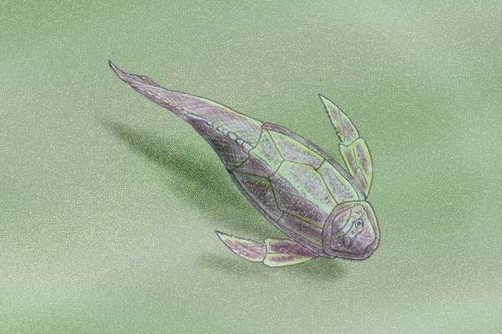
Order the hardcover from Shop Skeptic
Order the hardcover from Amazon
Order the Kindle Edition
Order the Apple iBook
The legend of the Loch Ness monster is one of the most popular and enduring of all the tall tales of cryptozoology—and ironically, one of the most easily debunked as well. In our book Abominable Science!, Daniel Loxton and I laid the entire myth to rest about as conclusively as one can debunk something. Yet it still manages to drum up publicity on a regular basis, routinely appearing in news items that demonstrate how bad ideas just won’t die—and how journalists manage to keep paranormal and pseudoscientific ideas going, rather than doing their jobs as reporters, checking facts, and viewing their sources critically.
One recent news item can be listed as a classic “Journalism 101 FAIL.” A regional paper called The Scotsman ran an article claiming to have found the fossil of Nessie’s “great granny.” It is full of head-slapping howlers that make any geologist or paleontologist cringe at the ignorance of the reporter who ran the story. Loch Ness monster enthusiast Gary Campbell is featured (as he has often appeared in other silly Nessie stories from supposedly reputable news organizations), along with Dr. Evelyn Gray and archeologist Cait McCullagh, a curator at the Inverness Museum and Art Gallery. Following Campbell’s lead, The Scotsman makes a big fuss about a Devonian fossil fish called Pterichthyodes milleri, from the Old Red Sandstone in the area, collected by the pioneering fossil collector Hugh Miller back in the 1830s and resting in the collection of the Inverness Museum. Apparently ignorant of every aspect of paleontology and geology, Campbell and the gullible reporter claim this fish is an ancestor to “Nessie,” offering “evidence that she exists and that her relatives populated the Highlands in prehistoric times.” Instead of using the fossil animal’s proper name, they’ve nicknamed it “Pessie.”

A reconstruction of Pterichthyodes milleri, an armored placoderm from the Devonian. (Image by Dmitry Bogdanov, via Wikimedia Commons. Used under Creative Commons Attribution 3.0 Unported license.)
Where to start with the list of scientific howlers in this story? First of all, Pterichthyodes was an extinct placoderm, a member of a very archaic group of early jawed fish that have NOTHING WHATSOEVER to do with plesiosaurs, or archaeocete whales—or to whatever prehistoric beast Nessie sightings are currently attributed in cryptozoological speculation. About all these divergent animals had in common was the streamlined body shape common to all aquatic animals, and the fact that they were vertebrates. Pterichthyodes was only a few inches long, covered with thick plates of armor over most its body except its tail. The entire group of placoderms vanished at the end of the Devonian—more than 360 m.y. (million years) ago, at least 160 m.y. before any plesiosaurs appeared. And this particular specimen is not unique. Dozens of Pterichthyodes are known from a lot of Old Red Sandstone localities, and found in many museums, so there is no reason to make such a fuss over this particular fossil.
But the geological howlers are even worse! The article states that it “lived among the dinosaurs” in Devonian freshwater lakes. NOT! Dinosaurs did not appear for another 160 million years. This is comparable to the anachronistic thinking of some people who think humans lived alongside dinosaurs, or that all extinct prehistoric creatures lived at the same time. The article implies that somehow “Pessie” evolved into “Nessie” right there in Loch Ness sometime after the Devonian. Sorry, but the geologic evidence is clear, and Loch Ness did not exist until fairly recently, when the Great Glen fault (which forms the loch) developed as a suture zone between terrains in the later Paleozoic. The loch itself is a feature of the last Ice Age, less than 3 m.y. old, and there WAS no water there from the Devonian (360 m.y. ago) until the Pleistocene (2 m.y. ago).
This entire article is so breathtakingly idiotic and uninformed about science that I wonder how anyone who calls themselves a “STEM ambassador” or a curator in a museum could endorse it. And indeed, they may not. It’s not clear how seriously Evelyn Gray and Cait McCullagh take the suggestion of a connection between Nessie and “Pessie,” but the museum appears happy to play along with the “flurry of press” about the fossil, sharing it on social media in promotion of their upcoming Inverness Science Festival lecture “The Real Loch Ness Monster.”
In any event, lest there be any doubt of the matter of elusive Scottish plesiosaurs, here is a quick summary of some lines of evidence which suggest that a plesiosaur-type Nessie cannot exist:
Biological: The climate is too cold around Loch Ness to support a large cold-blooded reptile for very long. In fact, there are only two species of lizards and two species of snakes in Scotland that live there today, and we’re currently in a relatively warm interglacial period. Basic biology shows us that there cannot be just one Loch Ness monster, but must be a whole population of them, if they have really lived for 65 million years since the plesiosaurs went extinct. If there were a population, we would routinely find plenty of bones and carcasses of them, as we do of every animal that dies in Loch Ness or any other large lake—but not a single scrap of bone has ever been found. In addition, the Loch is too small and too poor in resources to support a large population of predatory reptiles. The larger the body size of an animal, the larger the home range it requires to get enough food, and Loch Ness is well below the size to support even one monster. In fact, every inch of the Loch has been combed by radar and been dredged many times, so there is no chance that there is something big in the lake that we missed.
Paleontological: The fossil record of plesiosaurs is excellent, and so is the fossil record of marine vertebrates during the Age of Mammals after the plesiosaurs went extinct. There is not one single bone of a plesiosaur (which are very distinctive and easy to recognize) found in any rocks younger than 65 m.y. old, even though there are lots of other large marine animals (sharks, whales, sea lions, manatees, and others) routinely found in places such as Sharktooth Hill, California, and the Calvert Cliffs along Chesapeake Bay. Since larger fossils have a much better chance of preservation, this is conclusive evidence that plesiosaurs have been extinct for 65 m.y.
Geological: Loch Ness is a glacial valley that was covered with a mile of ice only 20,000 years ago, and has been ice-covered for over 2.5 million years. If the monster hid in the Loch, was it locked in moving glacial ice for millions of years like you might hear in the plot in a cheap sci fi movie? If not, when did it get there? If it was hiding in other areas before coming to the Loch, which don’t we find fossils? Besides, Loch Ness is landlocked and well above sea level, so there is no way for a large sea creature to get there, especially since we know plesiosaurs could not crawl on land.
Cultural: As Daniel Loxton and I showed in our book, the “plesiosaur” meme about the Loch Ness monster is a recent invention. There is nothing plesiosaur-like about the colorful older “water-horse” folk tales found throughout Scotland. Instead, the “plesiosaur” meme emerged from one or two modern individuals: Alex Campbell, an influential early claimant of dozens of plesiosaur-like sightings; and, before him, George Spicer, whose trend-setting report of a long-necked monster crossing the road near the loch seems to have been influenced by the stop-motion sauropod in the then-newly-released 1933 version of King Kong. (The film’s sauropod first appears, plesiosaur-like, in the water, and then emerges onto land.) Then the newspapers and other media kept the phenomenon going over many years.
In addition, there were numerous hoaxes along the way which fed the myth, including the “Surgeon’s Photo”—the iconic, plesiosaur-like image of Nessie seen everywhere. One of the hoaxers revealed that he had photographed a toy submarine with a fake “head” stuck on top. Other hoaxes included floating bales of hay covered with tarps and ropes, or the “Nessie fin” that is just a grainy photo of nothing (bubbles? silt?) with too much photo “enhancement” and creative retouching.
In short, the story of the Loch Ness monster is completely impossible scientifically, and has been debunked by nearly every line of evidence available. Its only support comes from vague “eyewitness reports,” which are the worst possible evidence in a scientific investigation, since human eyes and brains are easily fooled. Plesiosaurs were fascinating creatures. It would be terrifying if they still roamed the earth, but despite Loch Ness legends, they are truly extinct.












Don:
I am crushed, I thought that you & Teresa had scheduled the Loch Ness Monster to appear during the Geo-Tour to England/Scotland in 2016!
Sad, Bob
I can personally testify to the coldness of Loch Ness having done various kayak trips on the loch. Another thing I have observed is that the light can produce some quite startling & strange effects causing to the water to look more “lumpy” than it actually is. In other words the surface of the loch can look relatively flat (or completely glass like on those rare occasions when there is no wind) while a distance away, especially if one is low down on the water (as in a kayak), the water can appear to be statically bigger (that’s the best way I can describe it). This effect is not unique to Loch Ness, I have seen it on other fresh water lochs as well as sea lochs in Scotland. But there is something about the light in that area which gives rise to this effect being more noticeable. Of course, it could be that one is “on the lookout” a bit more on Loch Ness. That’s my theory anyway, a bit more probable than a monster under the water. Of course Loch Ness is not the only Scottish loch to have this “legend”, Loch Morar has a similar legend. This monster is call Morag. Two monsters in country the size of Scotland? That’s a monster too far. or should be even for the gullible.
It’s the money. Skeptics Society is capitalizing on the myth for the ignorant, just as did Mr. Hubbard.
Well you wrote some words there but I’m not sure how the “Skeptical Society” is cashing in on anything….